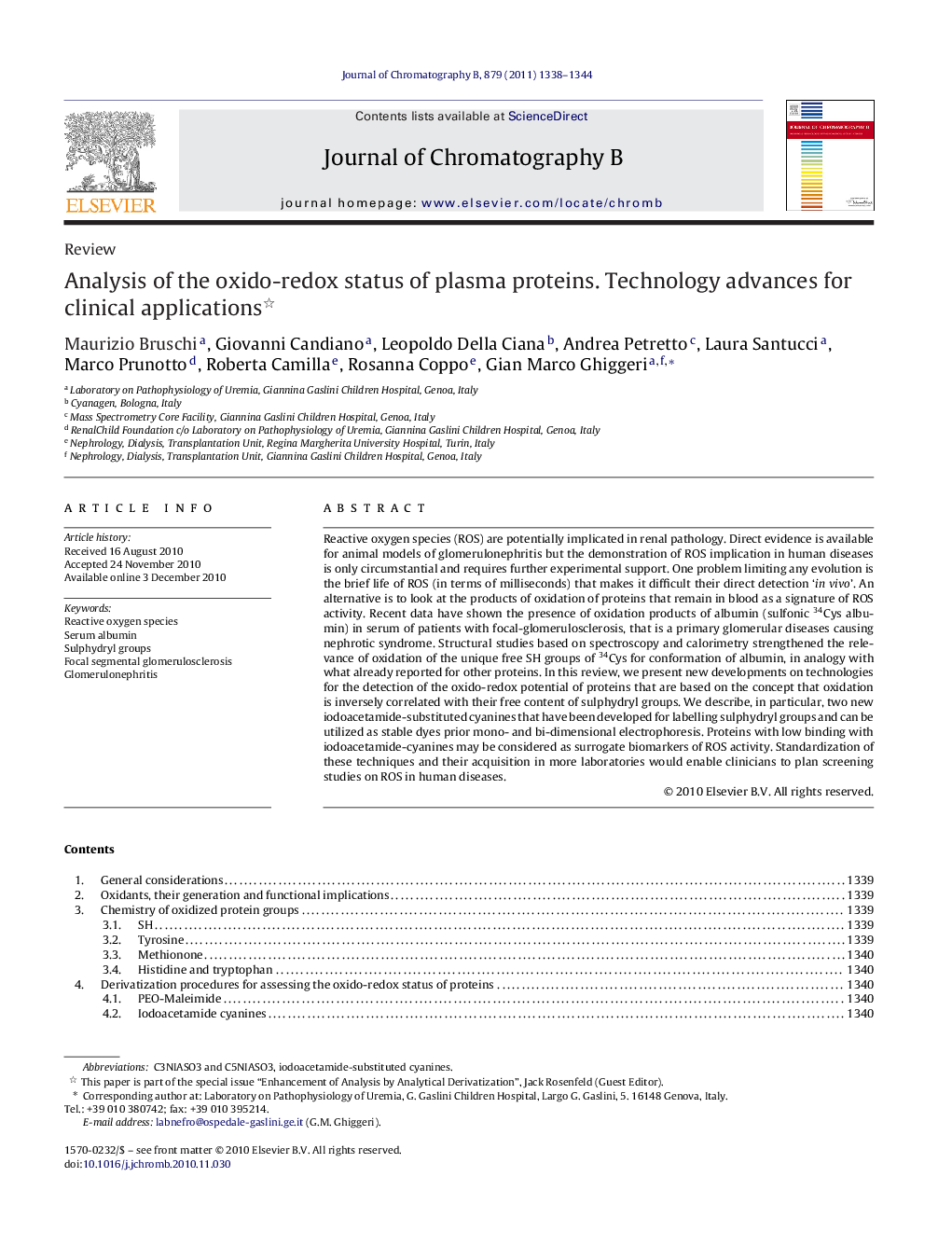| Article ID | Journal | Published Year | Pages | File Type |
|---|---|---|---|---|
| 1213425 | Journal of Chromatography B | 2011 | 7 Pages |
Reactive oxygen species (ROS) are potentially implicated in renal pathology. Direct evidence is available for animal models of glomerulonephritis but the demonstration of ROS implication in human diseases is only circumstantial and requires further experimental support. One problem limiting any evolution is the brief life of ROS (in terms of milliseconds) that makes it difficult their direct detection ‘in vivo’. An alternative is to look at the products of oxidation of proteins that remain in blood as a signature of ROS activity. Recent data have shown the presence of oxidation products of albumin (sulfonic 34Cys albumin) in serum of patients with focal-glomerulosclerosis, that is a primary glomerular diseases causing nephrotic syndrome. Structural studies based on spectroscopy and calorimetry strengthened the relevance of oxidation of the unique free SH groups of 34Cys for conformation of albumin, in analogy with what already reported for other proteins. In this review, we present new developments on technologies for the detection of the oxido-redox potential of proteins that are based on the concept that oxidation is inversely correlated with their free content of sulphydryl groups. We describe, in particular, two new iodoacetamide-substituted cyanines that have been developed for labelling sulphydryl groups and can be utilized as stable dyes prior mono- and bi-dimensional electrophoresis. Proteins with low binding with iodoacetamide-cyanines may be considered as surrogate biomarkers of ROS activity. Standardization of these techniques and their acquisition in more laboratories would enable clinicians to plan screening studies on ROS in human diseases.
